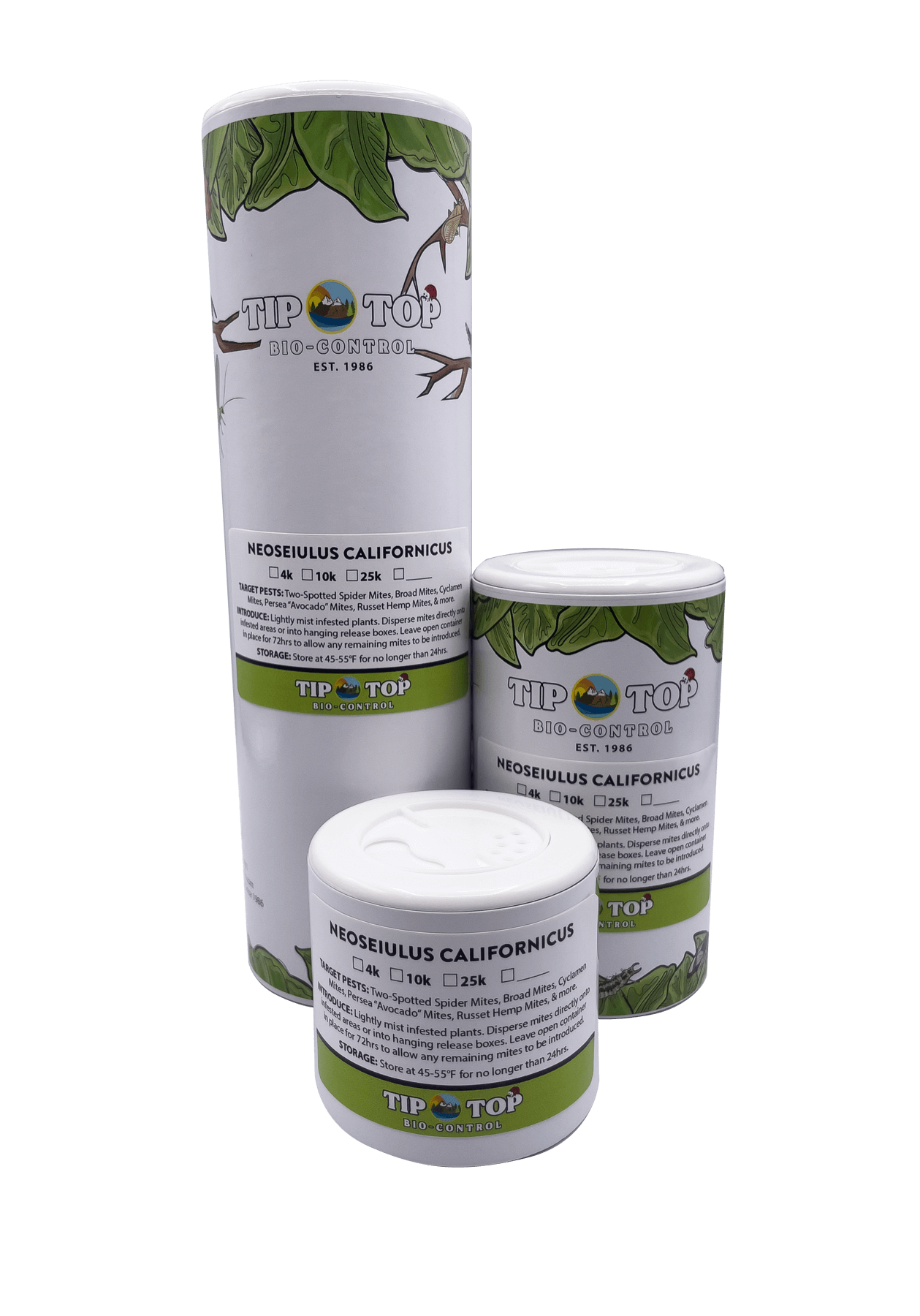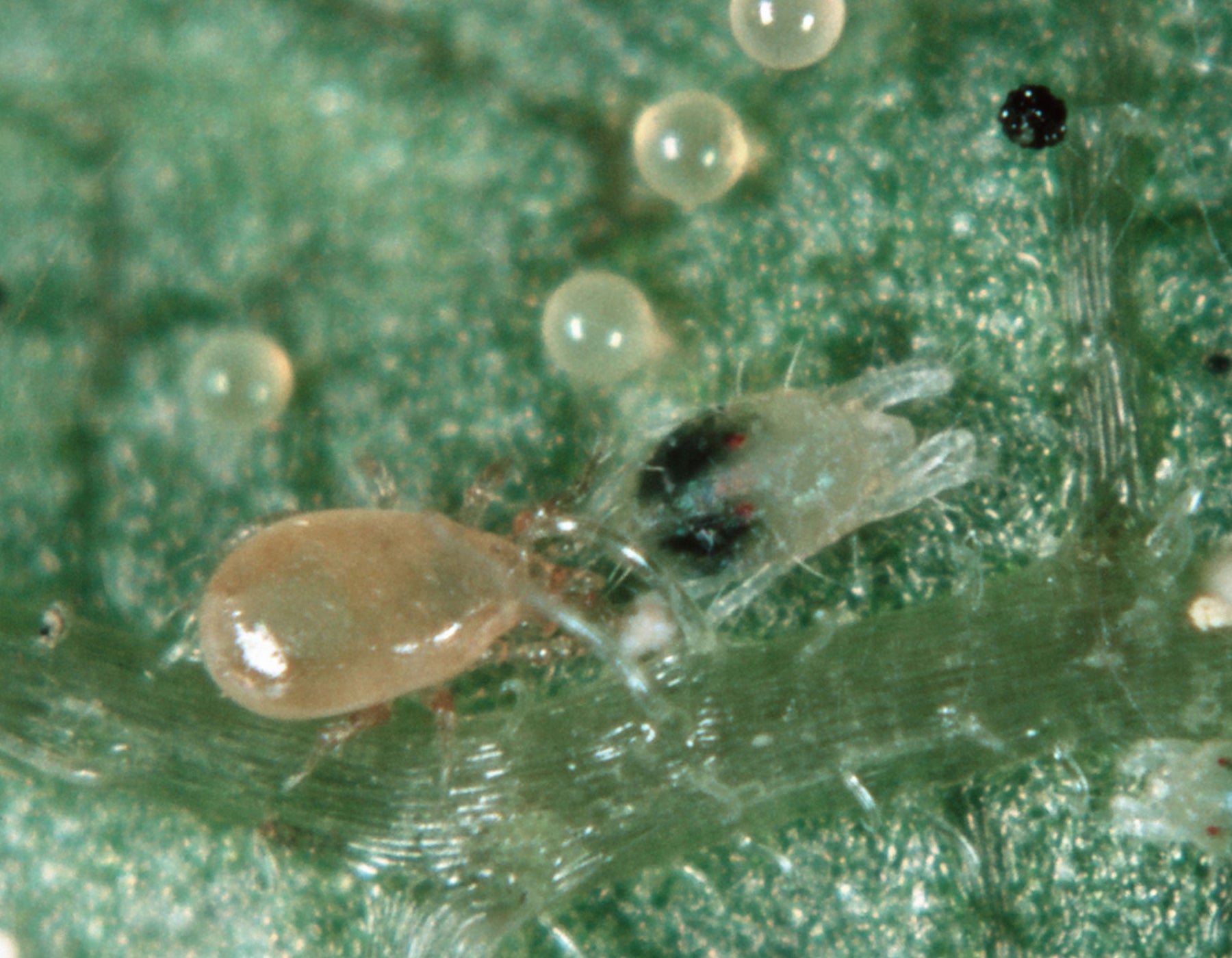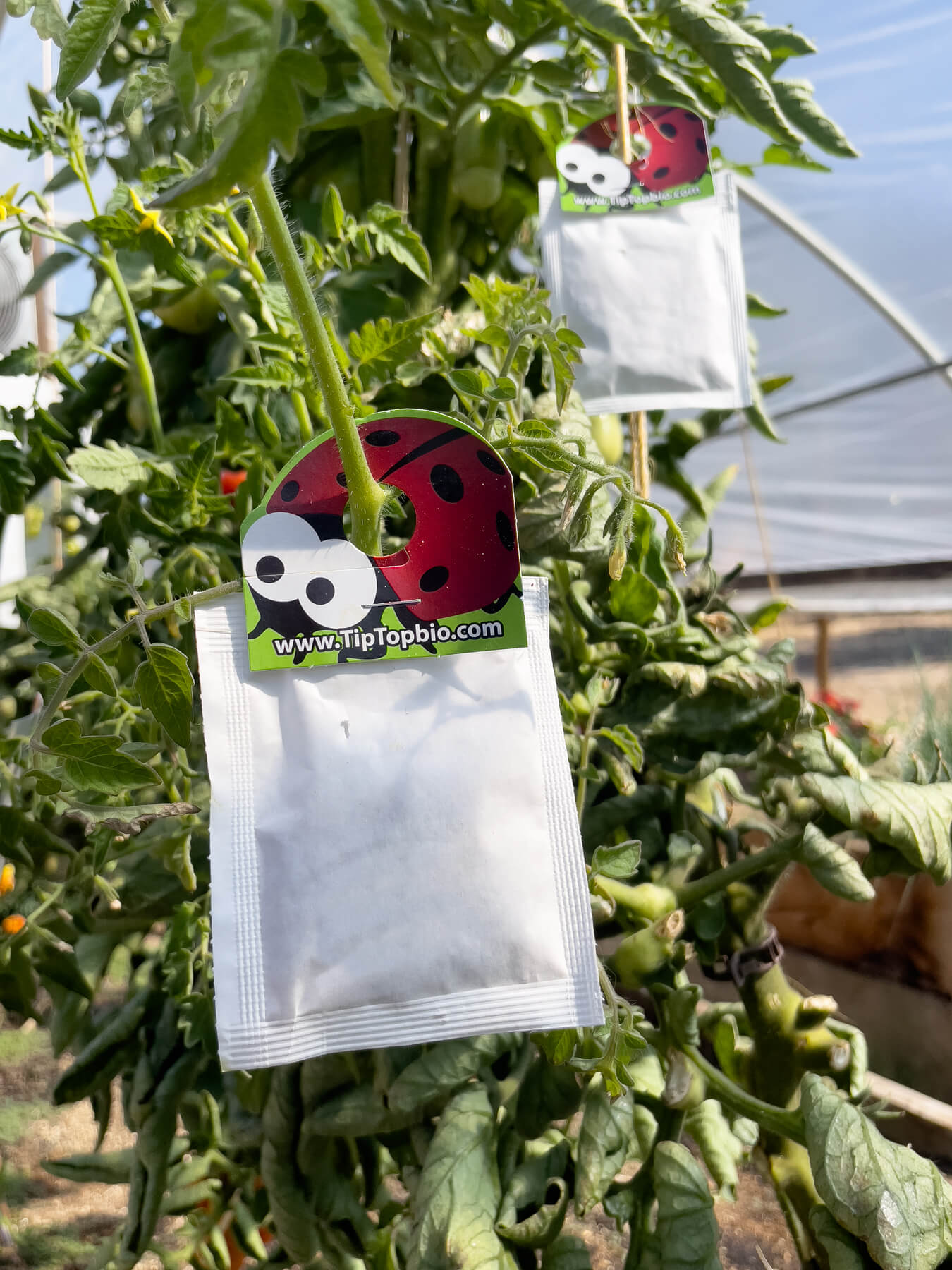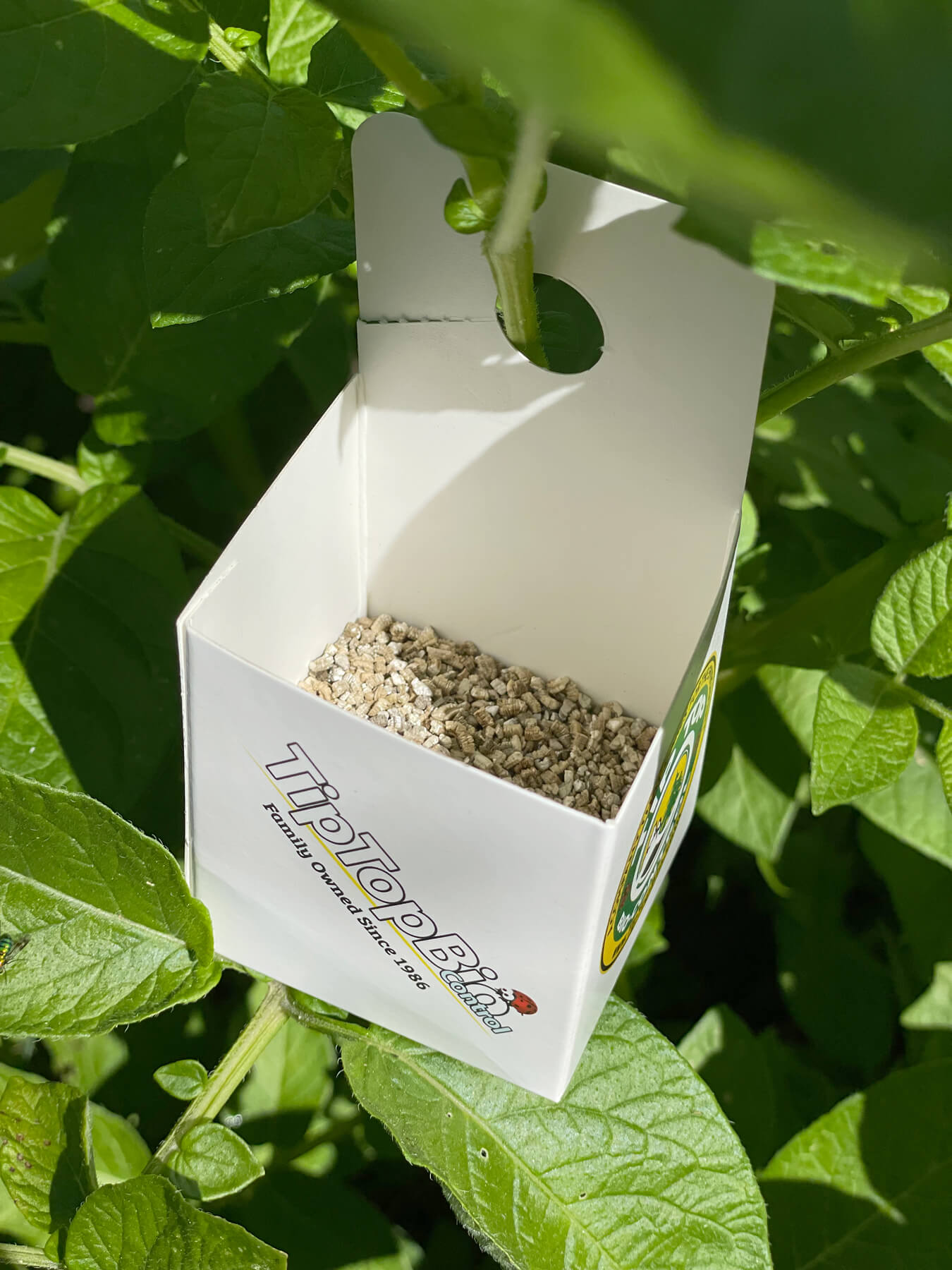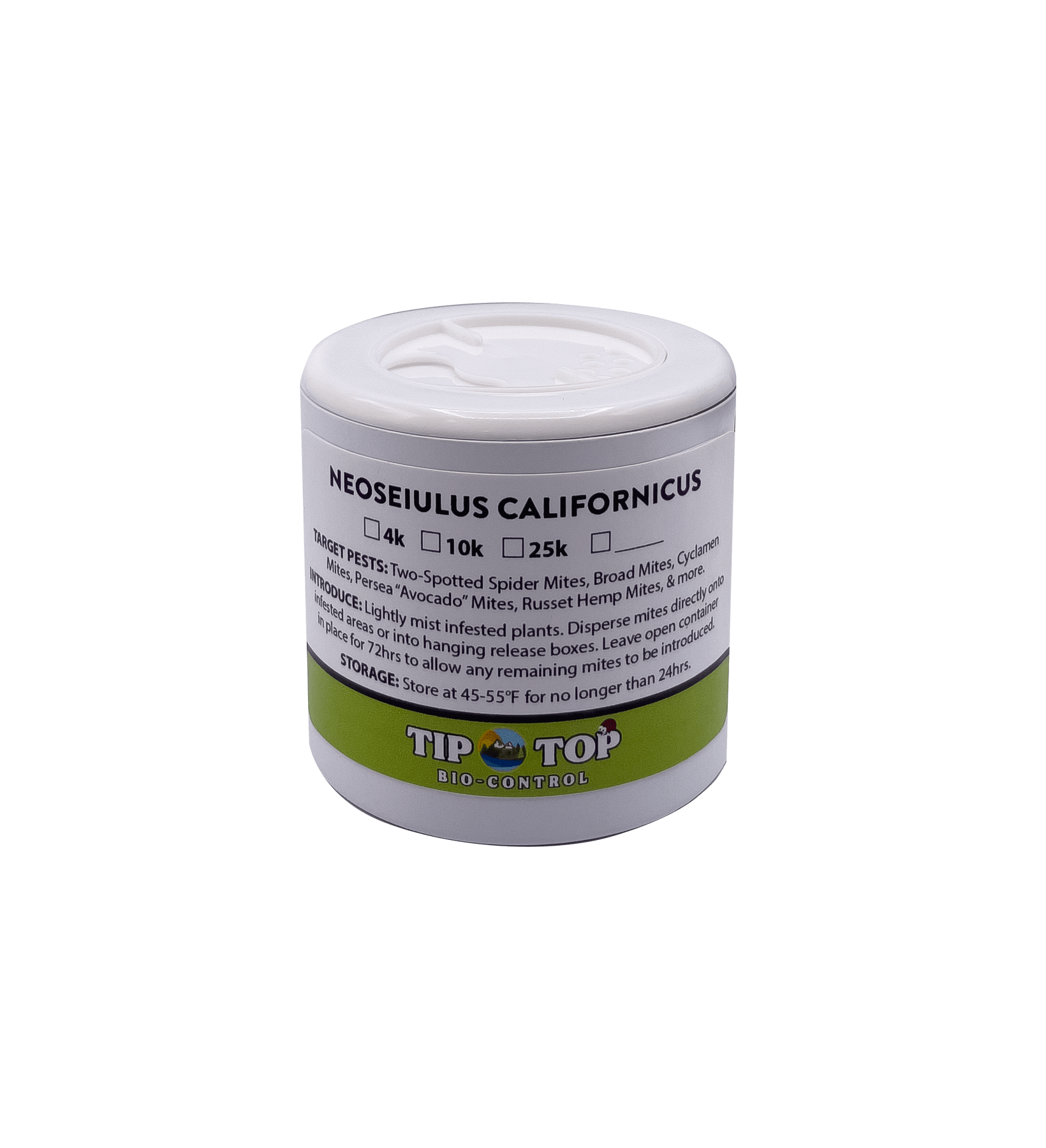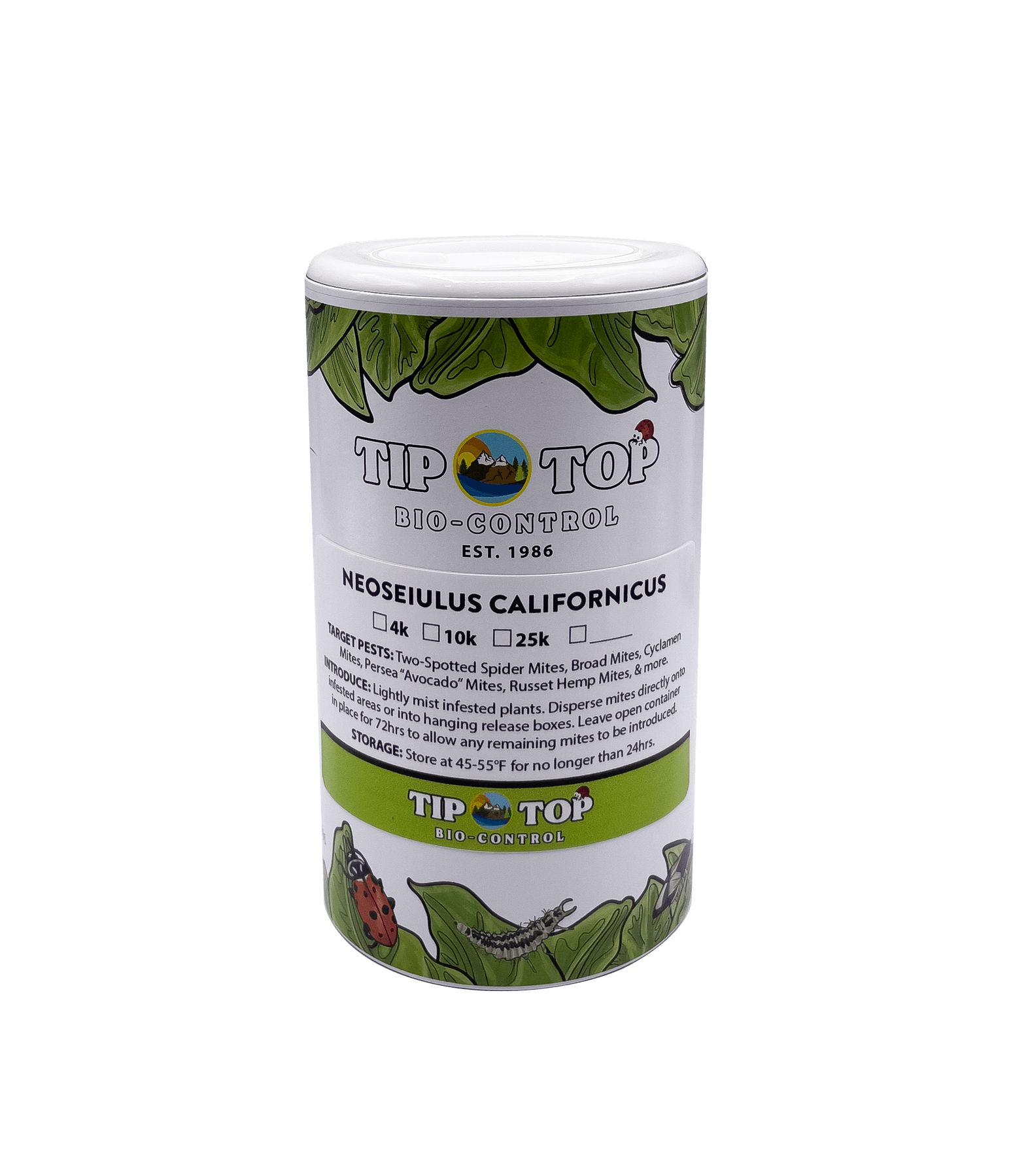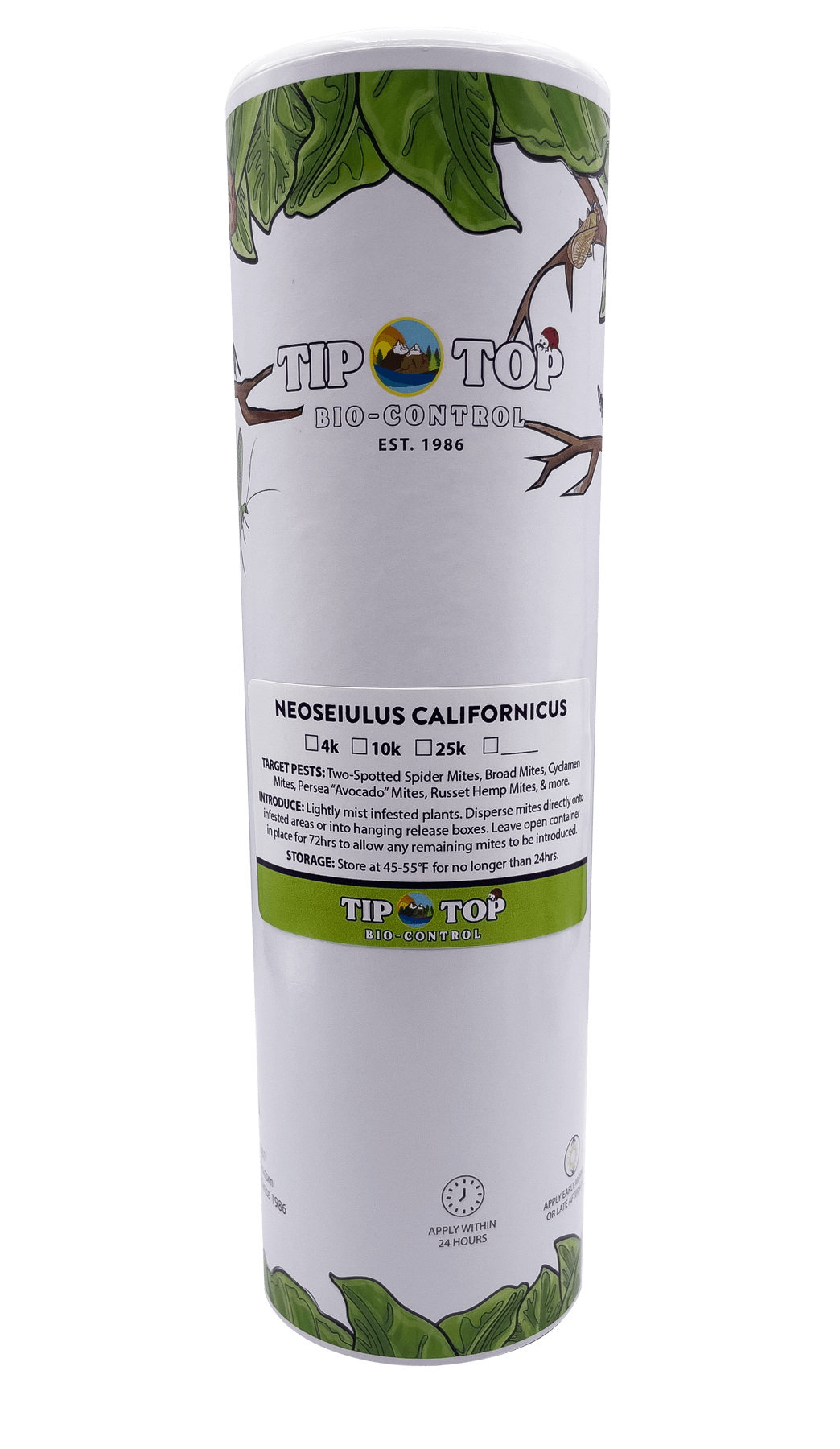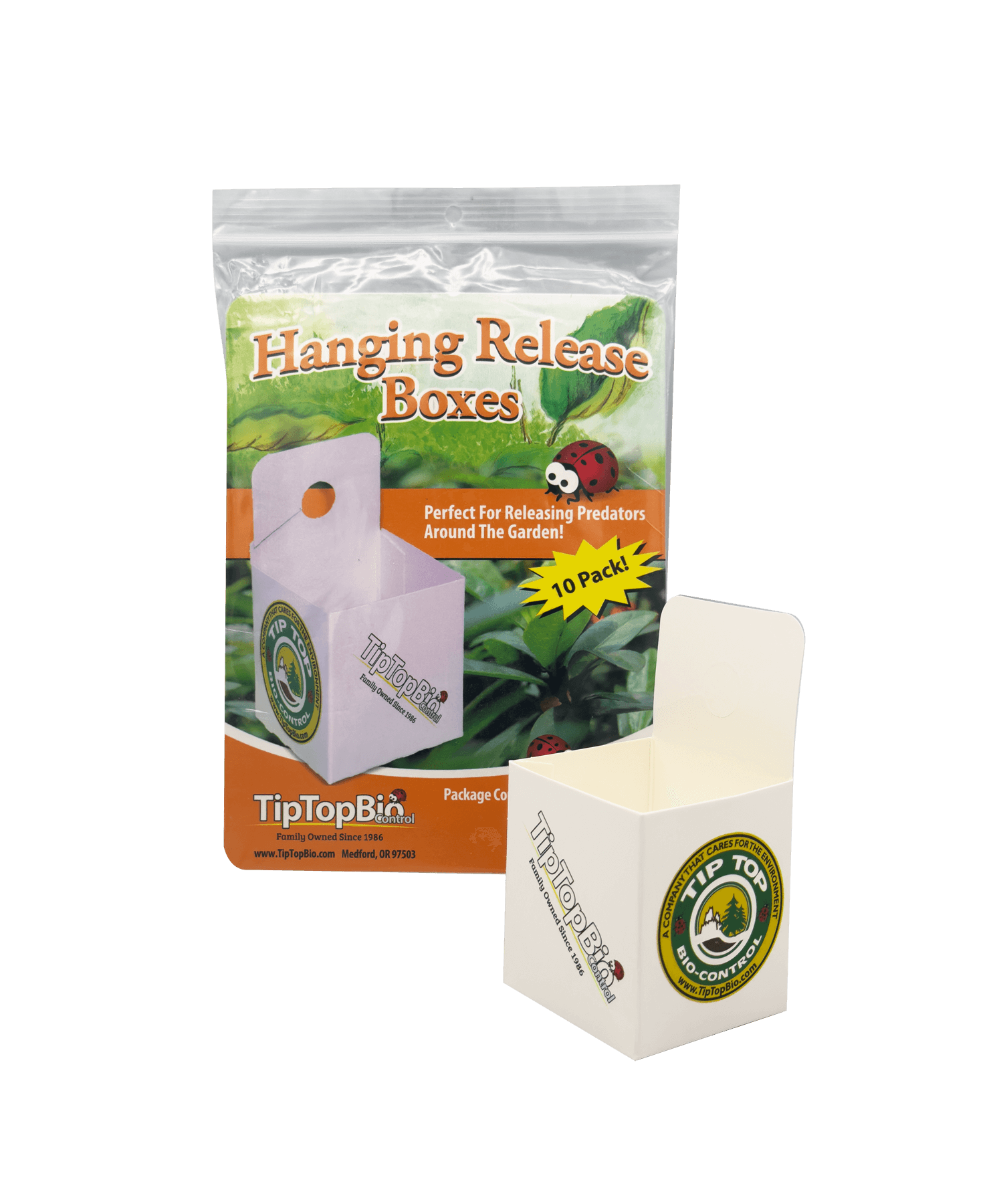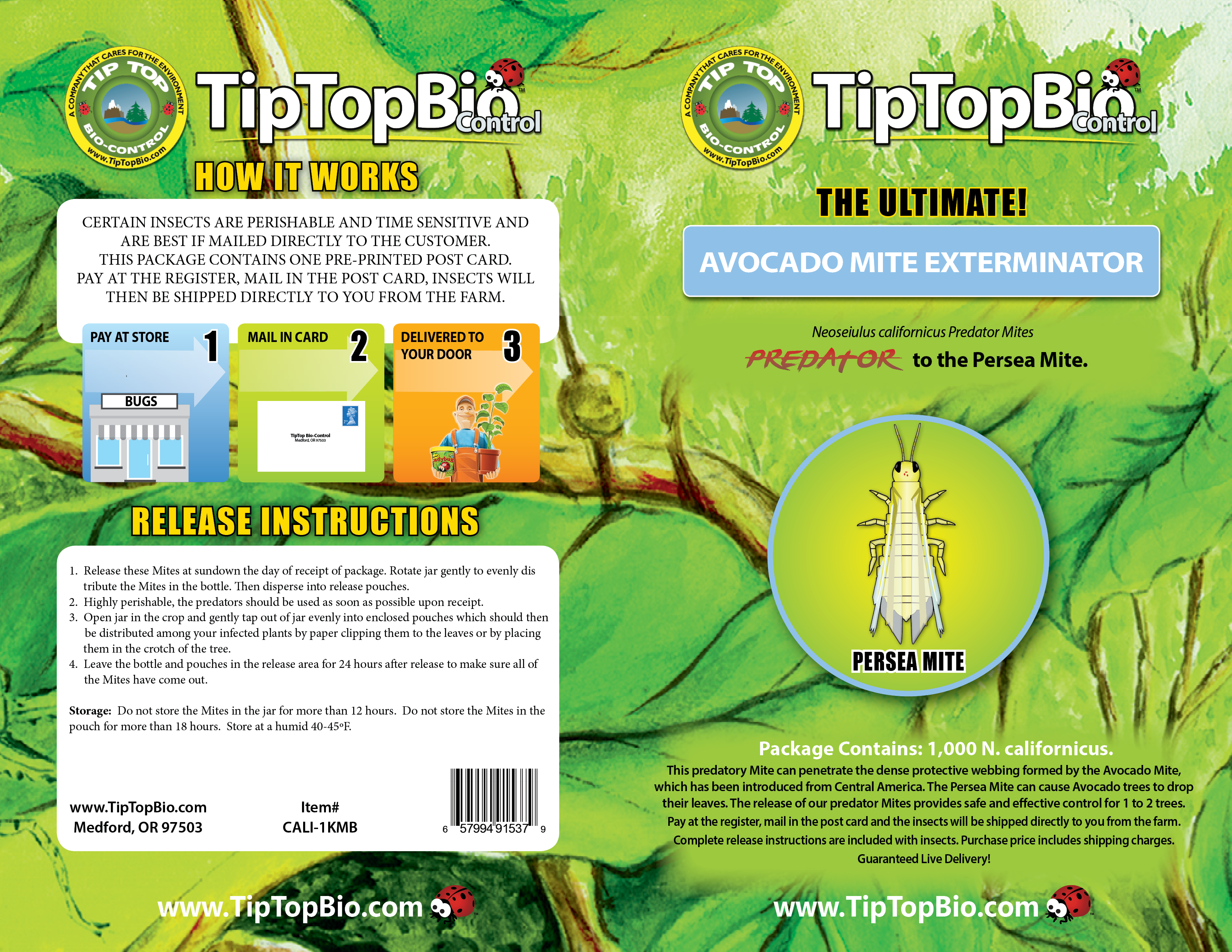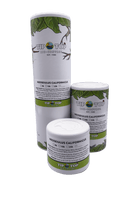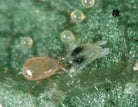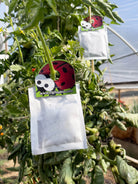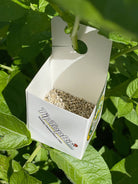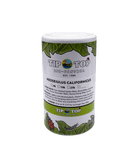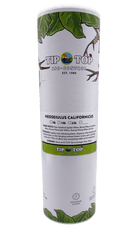Neoseiulus (Amblyseius) californicus - Generalist, Tolerates High Heats
Case Count
Couldn't load pickup availability
LIVE DELIVERY GUARANTEE
May perform better than other mites when humidity is lower (between 40-60%).
TARGET PESTS
Two-Spotted Spider Mites, Broad Mites, Cyclamen Mites, European Red Mites,
Persea “Avocado” Mites, Russet Mites, & more.
DESCRIPTION
CALIFORNICUS are recognized by eight legs and a buff to tan colored pear-shaped body that is approximately 1mm in size. Males are considerably smaller and darker than females. CALIFORNICUS are widely recognized for their effectiveness in hunting two-spotted spider mites. They are well known for withstanding high temperatures and humidity levels, and feeding on pollen to survive when pest populations are low. Females lay oval-shaped, translucent eggs on the underside of leaves and near pest populations. In about 2-4 days the eggs hatch into larvae with three pairs of legs and ready to feed on spider mite eggs. Progressing through two nymphal stages, they gradually target larger sized spider mite nymphs, until they become fully formed adults. Adult predator mites spend their 20-day lifespan consuming large numbers of spider mite in all life stages.
TEMPERATURE
50-104°F
PREDATORY MITES IN BOTTLES vs SLOW RELEASE SACHETS
ADULT MITES IN BOTTLES:
Best choice for an active infestation.
-
High percentage of hungry adults.
- Introduce weekly or bi-weekly, as needed.
- Introduce mites directly on infested plants or use Hanging Boxes to introduce predators neatly and concentrated on infested areas.
Predatory mites in bottles are a cost-effective and targeted solution to address active infestations or to cover extensive areas common in large scale gardens, greenhouses, and agricultural areas. While predatory mites are available in all life stages, bottles contain high concentrations of hungry adults, ensuring an immediate impact on pest populations. Whether distributed directly onto plant foliage or divided into optional Hanging Boxes, the adults will actively seek out prey as the immature predatory mites hatch, develop, and continue the cycle for sustained pest management.
SLOW RELEASE SACHETS WITH ALL LIFE STAGES:
Don't fight pests, prevent them.
-
Preventative and maintenance programs.
- Inexpensive and easy application.
- Steady flow of predators for 2-4 weeks.
Slow Release Sachets stand out as a convenient, time-saving, and highly effective approach to both preventative and long-term mite pest management. These sachets serve as a slow-release and protective haven for immature predatory mites. Sachets are a user-friendly and convenient method of targeted application in situations where manual application might be intrusive or impractical. The distribution process is as straightforward as hanging a sachet on a plant or in areas where pest management is crucial, ensuring a consistent and reliable presence of predators.
INTRODUCTION RATES
BOTTLE INTRODUCTION
0.5-2 mites per sq. ft., as needed.
SACHET INTRODUCTION
Hang 1 sachet per 6 feet, every 2-4 weeks.
It's important to note that these release rates serve as general guidelines and may vary based on the specific pest species, the crop or plant being treated, and level of infestation. Proper monitoring of the infestation and the subsequent effectiveness of the released beneficial insect population is crucial for determining the success of the biological control strategy.
GOOD BUG SUPPLEMENTAL DIET
Maintain your growing operation with well-fed beneficial insects as your natural defenders. By providing a dependable food source, you enhance their strength and effectiveness.
Our Good Bug Supplemental Diet combines Ephestia and Artemia, which are highly nutritional food sources rich in proteins, lipids, and essential fatty acids.
Packaged on easy-to-use hanging tabs!
STORAGE
For best results introduce immediately. Store at 45-55°F for no longer than 24hrs.
PRO TIPS:
Proper identification of the aphid species is important. Monitoring the crop closely and introducing beneficial insects early will help in control pest populations.
Pesticides, even wetting agents, and spreader-stickers may adversely affect beneficial insects' survival. Broad spectrum and systemic insecticides are toxic.
Californicus have a slow eating habit which allows them to survive longer without food - making them a great predator to catch infestations early on. They can survive longer under starvation conditions and can also live on a diet of pollen.
WHOLESALE
Not available in cases. Overnight shipping is required.
ITEM NUMBERS
CALI-4k: 4,000 mites per bottle.
CALI-10k: 10,000 mites per bottle.
CALI-25k: 25,000 mites per bottle.
CALISACHET-250: 1 sachet with 250 mites per sachet.
CALISACHET100-250: 100 sachets with 250 mites per sachet.

